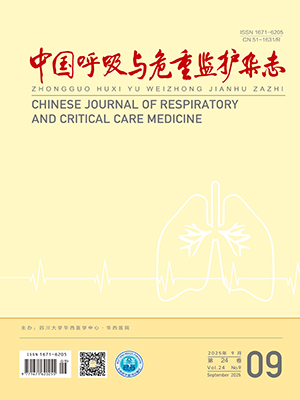| 1. |
Haslinger-Loffler B. Multiple effects of HMG-CoA reductase inhibitors (statins) besides their lipid-lowering function. Kidney Int,2008,74:553-555.
|
| 2. |
McConnell BB,Yang VW. Mammalian Krüppel-like factors in health and diseases. Physiol Rev,2010,90:1337-1381.
|
| 3. |
Klein S,Klosel J,Schierwagen R,et al. Atorvastatin inhibits proliferation and apoptosis,but induces senescence in hepatic myofibroblasts and thereby attenuates hepatic fibrosis in rats. Lab Invest,2012,92:1440-1450.
|
| 4. |
Ou XM,Feng YL,Wen FQ,et al. Simvastatin attenuates bleomycin-induced pulmonary fibrosis in mice. Chin Med J (Engl),2008,121:1821-1829.
|
| 5. |
Hamasaki Y,Doi K,Okamoto K,et al. 3-Hydroxy-3-methylglutaryl-coenzyme A reductase inhibitor simvastatin ameliorates renal fibrosis through HOXA13-USAG-1 pathway. Lab Invest,2012,92:1161-1170.
|
| 6. |
Feinberg MW,Cao Z,Wara AK,et al. Kruppel-like factor 4 is a mediator of proinflammatory signaling in macrophages. J Biol Chem,2005,280:38247-38258.
|
| 7. |
Alder JK,Georgantas RW 3rd,Hildreth RL,et al. Kruppel-like factor 4 is essential for inflammatory monocyte differentiation in vivo. J Immunol,2008,180:5645-5652.
|
| 8. |
姬文婕,陈雪芬,马永强,等.Krüppel样因子4基因干扰对RAW264.7细胞凋亡和吞噬的影响.细胞与分子免疫学杂志,2013,29:341-344.
|
| 9. |
Gibbons MA,MacKinnon AC,Ramachandran P,et al.Ly6Chi monocytes direct alternatively activated profibrotic macrophage regulation of lung fibrosis. Am J Respir Crit Care Med,2011,184:569-581.
|
| 10. |
Degryse AL,Lawson WE. Progress toward improving animal models for idiopathic pulmonary fibrosis. Am J Med Sci,2011,341:444-449.
|
| 11. |
Yang T,Chen M,Sun T. Simvastatin attenuates TGF-β1-induced epithelial-mesenchymal transition in human alveolar epithelial cells. Cell Physio Biochem,2013,31:863-874.
|
| 12. |
Zhu B,Ma AQ,Yang L,et al. Atorvastatin attenuates bleomycin-induced pulmonary fibrosis via suppressing iNOS expression and the CTGF (CCN2)/ERK signaling pathway. Int J Mol Sci,2013,14:24476-24491.
|
| 13. |
魏路清,刘斌,李振华,等.阿托伐他汀减轻博莱霉素诱导大鼠实验性肺纤维化.基础医学与临床,2009,29:1198-1202.
|
| 14. |
魏路清,董彦,李振华.阿托伐他汀对肺纤维化大鼠肺泡灌洗液MMP-9和TIMP-1的影响.浙江大学学报(医学版),2011,40:64-70.
|
| 15. |
Kim JY,Choeng HC,Ahn C,et al. Early and late changes of MMP-2 and MMP-9 in bleomycin-induced pulmonary fibrosis. Yonsei Med J,2009,50:68-77.
|
| 16. |
Izidoro-Toledo TC,Guimaraes DA,Belo VA,et al. Effects of statins on matrix metalloproteinases and their endogenous inhibitors in human endothelial cells. Naunyn Schmiedebergs Arch Pharmacol,2011,383:547-554.
|
| 17. |
陈雪芬,姬文婕,胡道川,等.Krüppel样因子4在实验性肺纤维化小鼠肺组织中的表达及意义.中国呼吸与危重监护杂志,2013,12:509-512.
|
| 18. |
Won HH,Kim SR,Bang OY,et al. Differentially expressed genes in human peripheral blood as potential markers for statin response. J Mol Med,2012,90:201-211.
|




